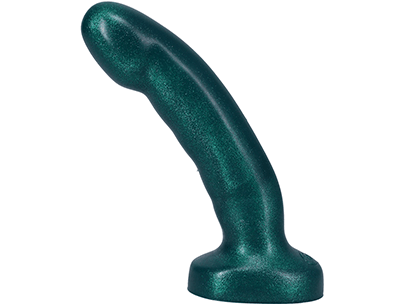Feeling sexy again after having a baby can be a challenge. It’s probably the last thing on your mind while you’re adjusting to a new schedule, sleepless nights, breastfeeding, diapers and the whole concept of, you know, ensuring the survival of another human who’s entirely dependent on you for every possible function.
On top of all that, your body’s just spent the better part of a year going through a ton of intense changes and withstanding a lot of pressure and pain. Childbirth, as miraculous as it is, can be pretty traumatic to the body (and mind). You’re not going to just snap back to the way things were.
Thinking about becoming sexually active again after childbirth is a process. Talk to your doctor to discuss a time frame for intercourse. It’ll vary depending on genetics, the type of labor and delivery you had, whether or not you had an episiotomy, and so many other factors. Don’t rush yourself or compare your healing time to a statistic or arbitrary benchmark. Listen to your body, your heart and your doctor to decide when the time is right. This guide will help you ease back into using your body for more than just sustaining a little life.
Healing After Childbirth
A study in the UK found that the average woman only begins to feel like her “normal” self, physically and emotionally, after a full year.
A few factors that will impact your healing time:
- Whether or not you had an episiotomy, and any complications healing that arose
- Healing or complications from tearing
- Impact on internal organs and pelvic muscles from weight and pressure
- Breastfeeding
- Any genetic or preexisting health conditions
- The amount of rest you’re able to get
For the first six weeks after childbirth, your uterus is returning to its normal shape, your organs are settling back into their previous places, and blood and fluid is draining from your uterus. A sitz bath, which is a warm, shallow bath you sit in, will provide relief from discomfort and encourage healing by increasing blood flow to the area.
Your pelvic region may take a bit longer than six weeks before you’re ready for sex. Scar tissue, incontinence, bowel pain and infection are real issues that can occur while you’re healing. If you have any concerns, ask your obstetrician for a referral to a women’s health physical therapist. These pelvic floor specialists can help expedite healing time and get your pelvic floor back into shape in no time.
Pelvic exercises
Pregnancy and childbirth can stretch, damage or weaken your pelvic muscles, which can cause the aforementioned issues like incontinence. To tone your pelvic floor muscles, your doctor may recommend practicing pelvic floor-strengthening exercises. You can practice these anywhere, but if you’re dealing with bladder control issues, practicing over the toilet after you pee, in the shower, or in the bathtub are great risk-free places to do it. Don’t do it while you pee as this creates some risk over time of irritating the urinary tract.
Simply make the motion that you would to cut off your urine stream before you’re finished. You can also insert a finger into the vagina so you can physically feel your muscles squeezing and then releasing. HUSTLER Hollywood also sells a variety of kegel exercisers, in the form of weights, beads, vibrating balls and more to help you practice.
Pro tip: if you have a tilted uterus, an exerciser with just one “ball” will be far more comfortable. Simply insert a few times a week while you wash dishes, shop online or rock your new baby to sleep. The weight of the exerciser will cause your pelvic muscles to contract involuntarily, so it’s as close to a mindless workout as you can get!
Building your self-esteem after childbirth
Even if you’re feeling pretty happy down there six weeks after childbirth and your nipples, clit and vag are doctor-approved as good to go, getting in the mood again can feel like an insurmountable hill to climb. You may not recognize your body in the mirror; pregnancy can cause so many changes in your breasts, hips, belly, thighs and more. Some women have even reported that their feet have grown, or their ear shape has changed!
The media doesn’t help, publishing harmful rhetoric about so-and-so “getting their body back.” That just isn’t how it works. Your body is yours – there’s no “getting it back.” There’s enormous social pressure for women to push themselves to work out and diet to become “hot moms,” but so few real women have the time, energy and money to do this. If you’re not a celebrity, you may have more urgent priorities to focus your energy on, like feeding your kid, balancing a workload, keeping well-intentioned but smothering family at bay, or finding five minutes to close your eyes here and there.
That said, stealing a few minutes here and there to practice some self-care is essential for your mental health. Exercise helps tremendously – not to shed pounds, but to boost your endorphins and energy level, reduce stress, and even tone abdominal muscles that may have been impacted by your pregnancy. Whether it’s taking long, brisk walks with your baby in tow or following along with a quick 20-minute yoga video, you’re never going to feel worse for exercising.
Feeling hot again, though, that’s another story. The main thing is not to compare yourself – to others or yourself. So few people go back to their “before” body. It’s easy and cheesy to say, “Look at what your body did! It made another human!” but it’s true. Your body is now a symbol of strength and life, a living miracle. You have to appreciate it now for what it is, what you know it’s capable of, and trust that beyond giving life, it will also be a vehicle for pleasure once again.
The first time
When you’re ready, go slow, communicate and breathe. It’s not like getting back up on a horse at first. You have to ease yourself into it. Depending on how recently you’ve given birth, you may be experiencing discharge, scarring, and low libido. Hormonal changes may cause tenderness and vaginal dryness.
Before you get started, empty your bladder and bowels if you need to. Take a warm bath to relax your body, and as always, keep a good water-based lube on hand to minimize friction and supplement your body’s naturally occurring lubrication.
Penetration may not feel awesome at first. It may be a bit uncomfortable, but if it’s outright painful, you may need to wait a bit. External stimulation can still be your friend, though! If you’re not ready for P-in-V, you can still enjoy sexual activity orally, manually or by using external vibes! It’s an awesome way to warm up to the idea of getting down. It’ll be a reminder that your body is capable of experiencing pleasure and get those juices flowing again, literally and figuratively.
Additionally, you may feel a bit anxious before you begin. Talk to your partner about your concerns. They should be advised to go slow, spend extra time focused on making you feel nice (mentally and physically), and spend lots of time cuddling and complimenting you. Allowing someone into your body is a vulnerable thing, especially after such a tremendous change has occurred. Hopefully, your partner is understanding and supportive, especially if you just pushed out their baby!
Sex positions
Deep penetration might be painful, so positions that enable more shallow penetration or empower the woman to be in control are swell options.
Getting on top and hooking your feet over your partner’s calves will provide some leverage and distance and enable you to stay in control of the depth of the thrust.
A spooning position also puts some distance between a penis and vagina so strokes aren’t overwhelming. The big spoon can also reach around to provide some manual stimulation of the breasts and clit while avoiding contact with a sensitive post-C-section belly.
Another great option is to lay on your tummy (or hold a pillow if that’s more comfortable) and have your partner enter you from behind. Unlike a traditional doggy style, which allows for deep penetration, having your whole body flat will only allow your partner to enter so far. It’s also a treat because, hey, they can do all the work! You deserve it.


















